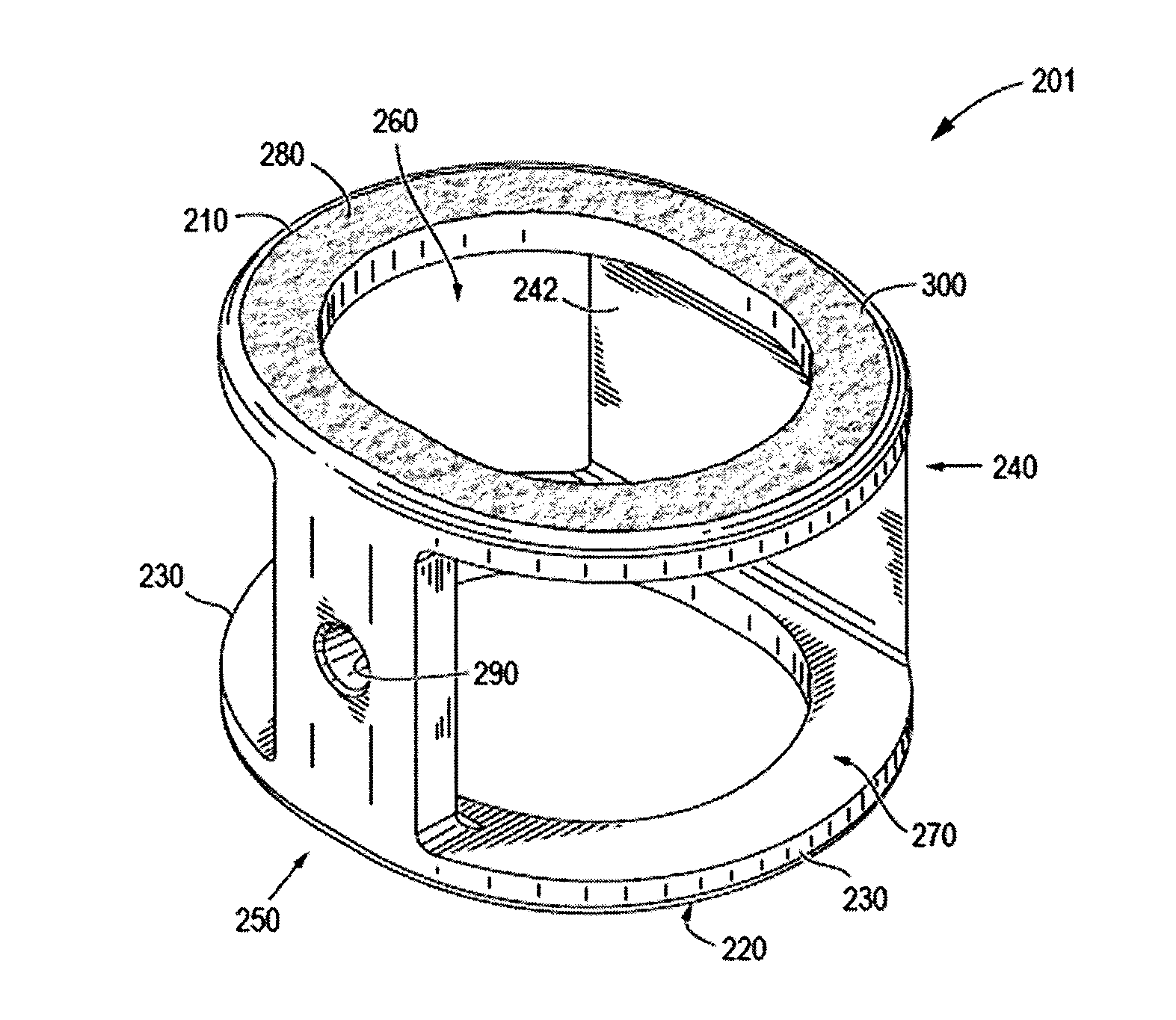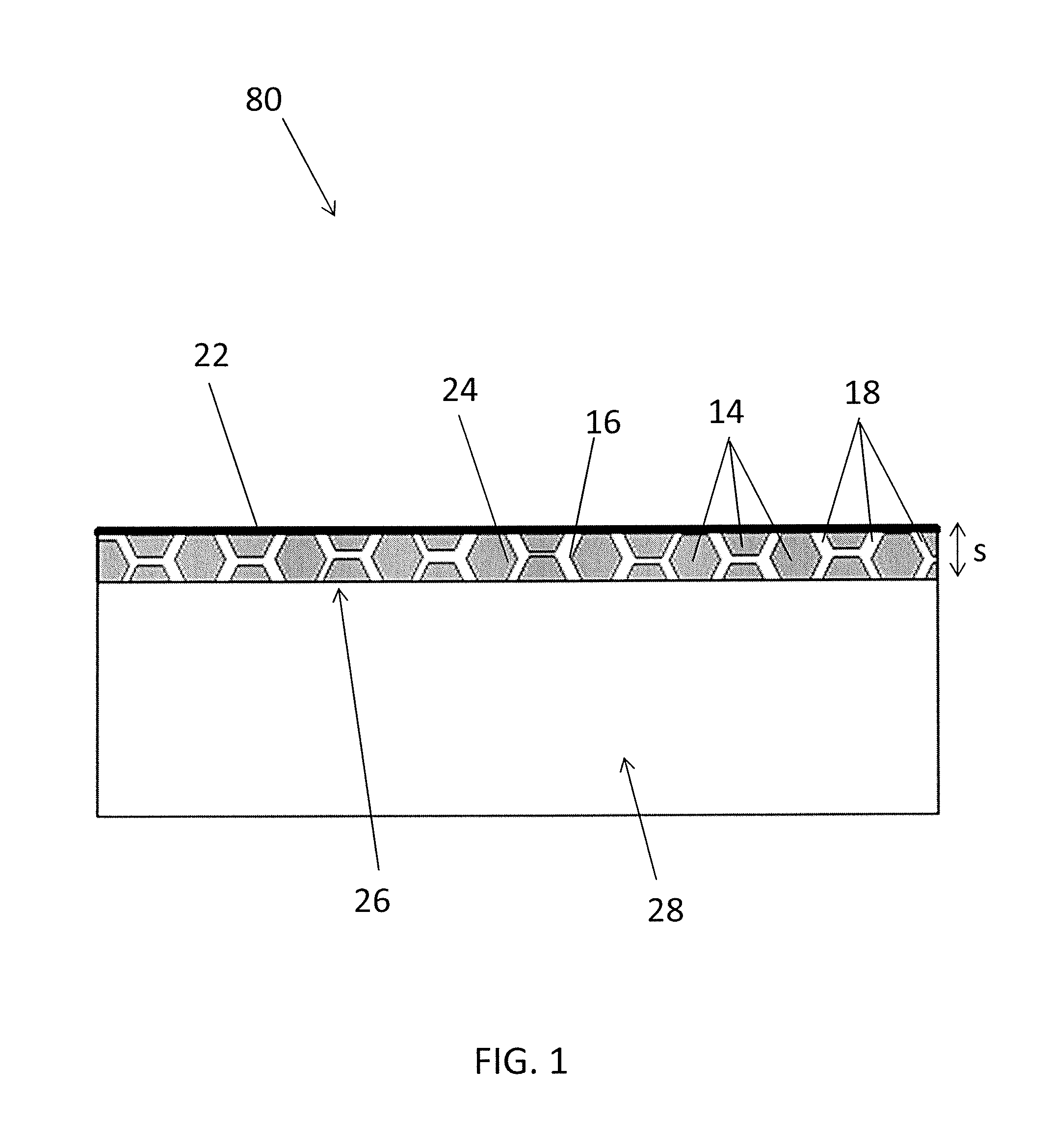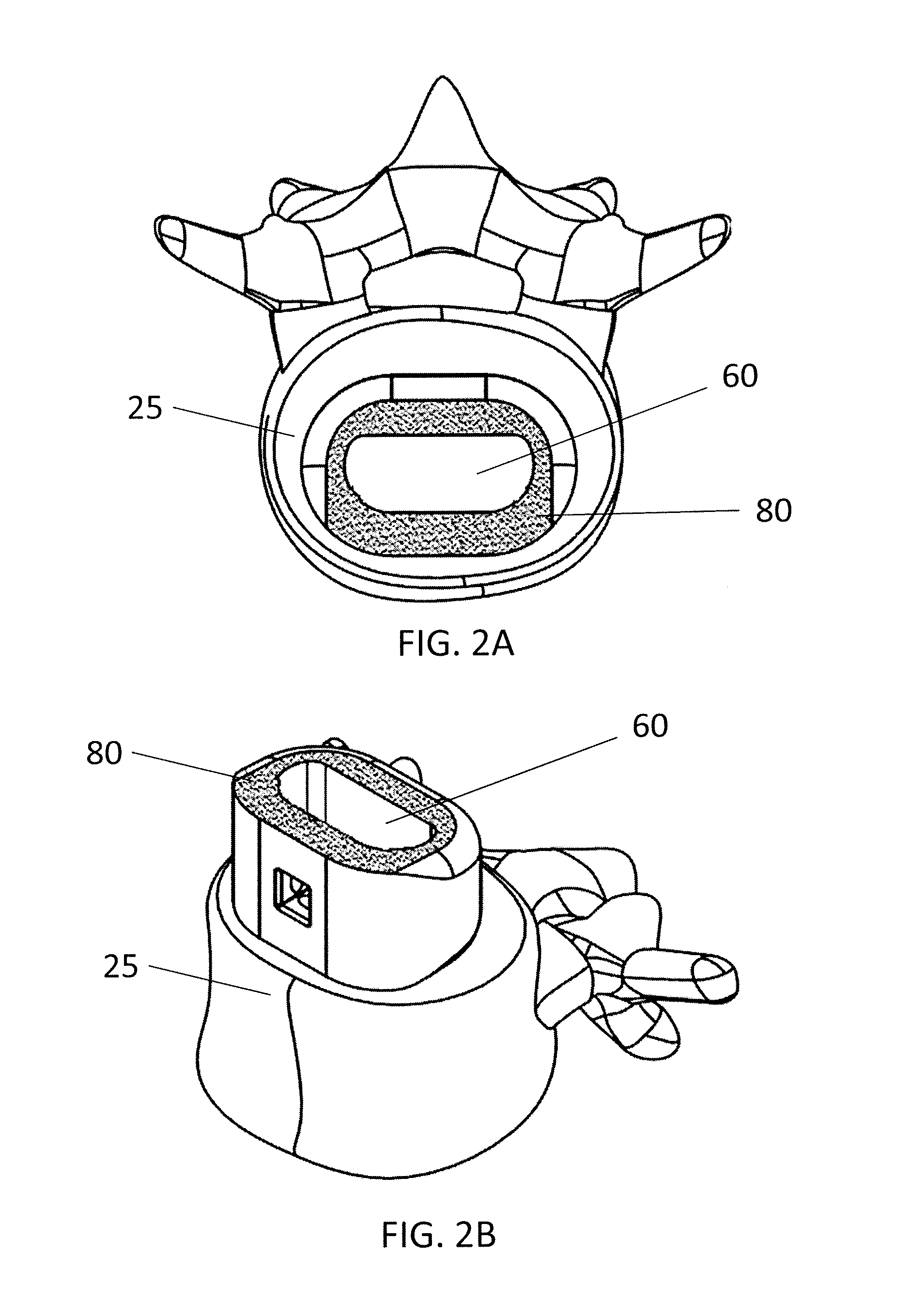Surface and subsurface chemistry of an integration surface
a technology of integration surface and chemistry, which is applied in the field of chemistry of integration surface, can solve the problems of impaired discs, affecting the anatomical functions of vertebrae, and affecting the health of discs, so as to facilitate osteointegration, facilitate the attachment of osteoblasts, and generate non-stressful friction
- Summary
- Abstract
- Description
- Claims
- Application Information
AI Technical Summary
Benefits of technology
Problems solved by technology
Method used
Image
Examples
Embodiment Construction
[0039]The present invention provides for interbody spinal implants and processes of producing the implants. According to one embodiment of the present invention, the implant includes an integration surface having a roughened surface topography for at least a portion of the top surface, the bottom surface, or both surfaces. The integration surface comprises at least (a) a plurality of grains; (b) intergranular boundaries between the plurality of grains; and (c) unsatisfied chemical bonds. According to another embodiment of the present invention, the integration surface may be produced by texturing a surface by a chemical process, a mechanical processes, or both types of processes to provide the plurality of grains and intergranular boundaries and chemically etching the surface to provide unsatisfied chemical bonds. In addition, the plurality of grains and the intergranular boundaries may etch at different or non-uniform etch rates (e.g., the intergranular boundaries may etch at a fas...
PUM
 Login to View More
Login to View More Abstract
Description
Claims
Application Information
 Login to View More
Login to View More - R&D
- Intellectual Property
- Life Sciences
- Materials
- Tech Scout
- Unparalleled Data Quality
- Higher Quality Content
- 60% Fewer Hallucinations
Browse by: Latest US Patents, China's latest patents, Technical Efficacy Thesaurus, Application Domain, Technology Topic, Popular Technical Reports.
© 2025 PatSnap. All rights reserved.Legal|Privacy policy|Modern Slavery Act Transparency Statement|Sitemap|About US| Contact US: help@patsnap.com



